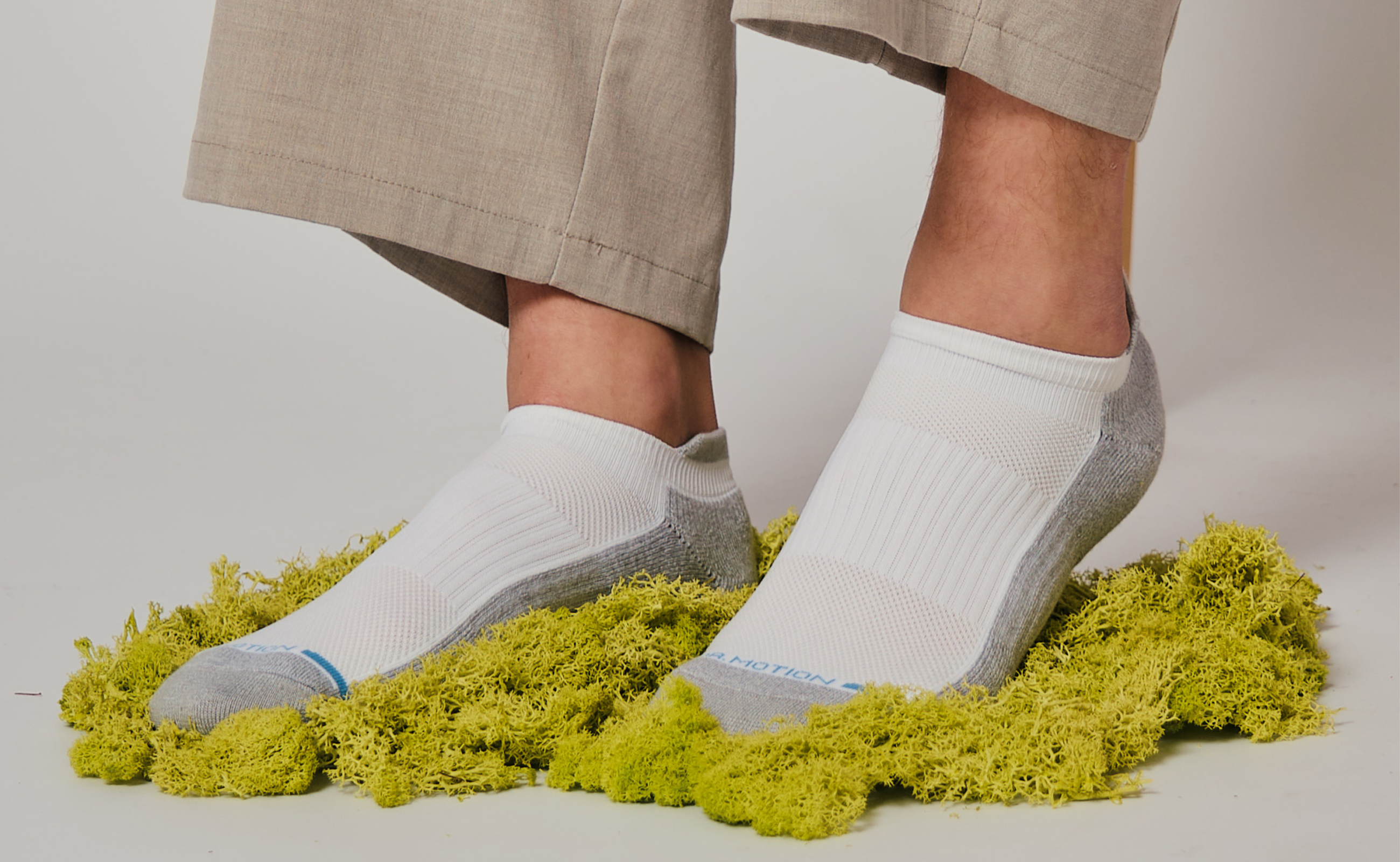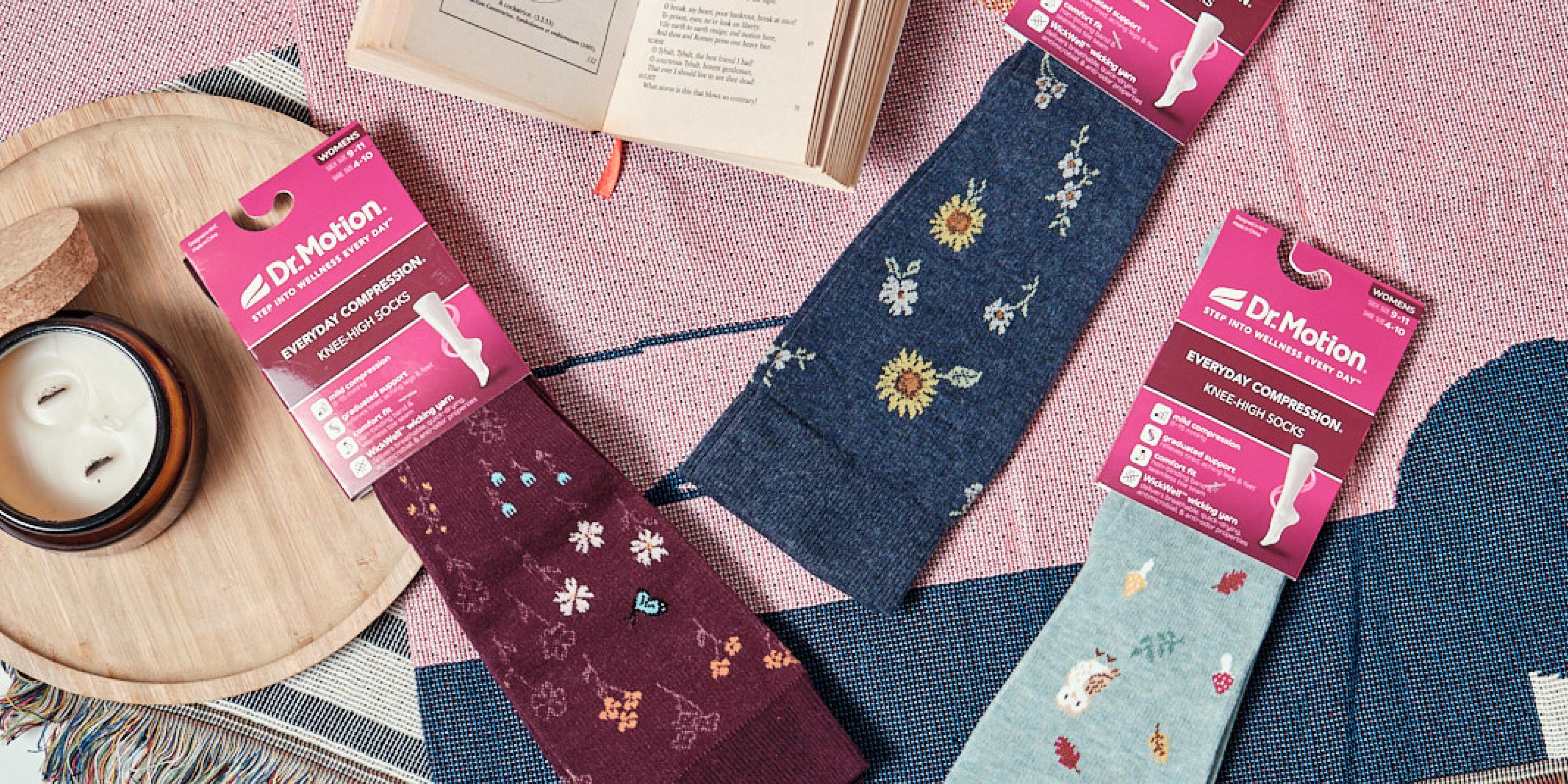What Compression Sock Pressure Level is Right For You?
Understanding Compression Socks Pressure Levels
If you find yourself struggling with leg pain, tired feet, and swollen ankles, you may have decided to investigate the world of medical compression socks and their benefits. When you start checking the available options, however, this sensible decision may seem a bit more complicated -- especially when you notice that these specialized socks apply different levels of compression to the legs and feet. Now you have to ask yourself, "What level of compression socks do I need, and why?" No worries --we’re here to help. Let's take a closer look at the not-so-mysterious levels of compression socks pressure.
8-15 mmHg vs. 20-30 mmHg Compression Socks
Compression socks offer a specific range of compression. The mmHg compression simply indicates the pressure level’s strength; 8-15 mmHg indicates a lighter degree of compression and 20-30 mmHg indicates that the socks provide relatively strong compression. You may also see ranges of 15-20 mmHg or even 30-40 mmHg. Depending on how they're designed, the sock may provide a uniform degree of compression, or they may offer graduated compression that varies from the foot and ankle to the calf.
When Less Is More
Despite what you might assume, more compression isn't necessarily better -- and for most wearers, it might even do more harm than good. Too much compression (when you don't need it) can actually reduce blood flow to your legs, making your circulation issues worse instead of better.
The strongest compression sock levels, also called anti-embolism stockings, are generally reserved for patients recovering from surgery or otherwise unable to stand and walk. But if you're like most compression sock wearers, you're just looking for a comfortable, fashionable pair of socks that can keep the blood flowing and reduce discomfort. Maybe you stand on your feet all day in your job, for instance, or perhaps your legs and feet could use a little extra help in your athletic endeavors. In those conditions, you almost certainly need 8-15 mmHg of compression.

What level of compression socks do I need for flying?
Flying in a compressed cabin can worsen circulatory problems in your legs. Even in these situations, however, your 8-15 mmHg compression socks may provide adequate support for short or occasional flights. If you find yourself constantly flying across the world, you might be at elevated risk for deep vein thrombosis, also known as "economy class syndrome." In that case, you might keep an extra pair of 15-20 mmHg socks on hand for marathon travel days.

How to Wear Compression Socks
Even 8-15 mmHG compression socks need to be worn correctly if you want to keep your legs comfortable and your circulation performing as it should. Make sure to follow any instructions that came with the socks. When putting on graduated compression socks, pay careful attention to the alignment of the socks, especially at the ankle (where the compression should be strongest).
Watch out for any bunching of the material as you put on your compression socks. Bunching at any point along the sock can add unwanted extra squeezing force, cutting off the blood flow in that part of the foot or leg. If you can't straighten out the bunching to your satisfaction, it's worth the extra effort to peel the sock off and start over.
The 8-15 mmHg compression stockings pressure range meant for casual use can be worn for hours at a time, or even all day long. You do want to take them off at bedtime, however.
Take-Aways
- Compression socks offer different types of compression levels and support
- Too much compression isn't suitable for casual use, but moderate compression can help ease daily aches and pains
- Getting the right compression socks designed for flying can help your in-flight circulation
Ask your doctor whether you're a good candidate for compression socks. Then browse Dr. Motion’s inventory of men’s and women’s compression socks. We have a variety of cute and stylish pairs to choose from that can be worn all day!











